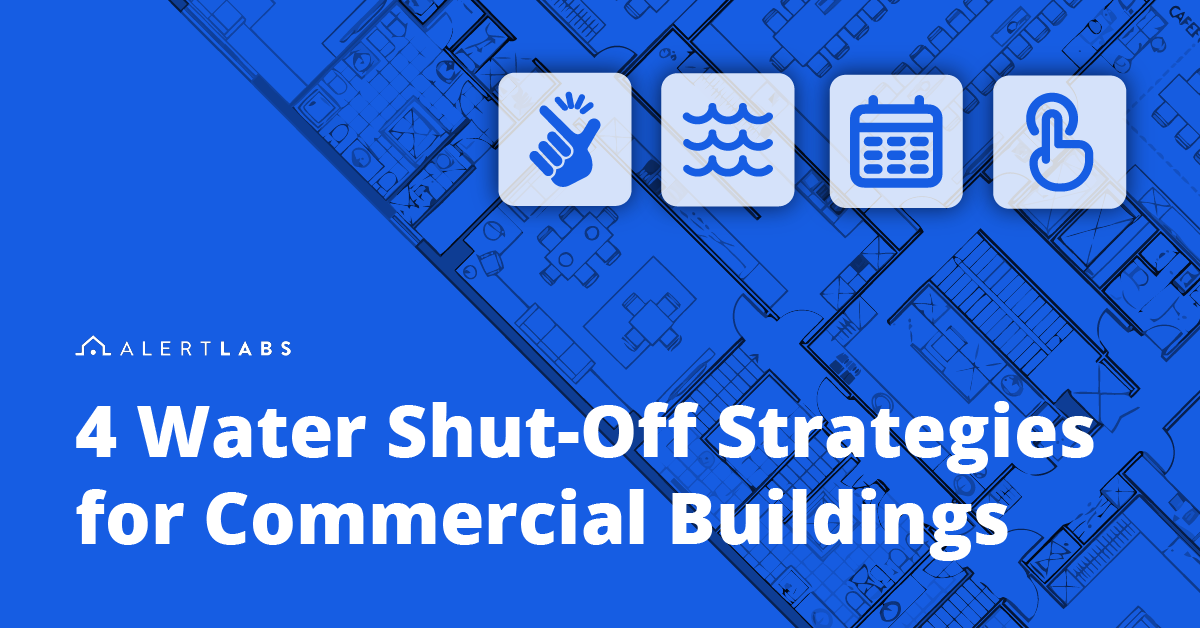Next-generation water monitors

Article originally appeared in the October 2018 edition of Canadian Underwriter
Fancy IoT gadgets can now check the water flow in a home or business and warn of any potential flood incidents. Here’s how they can save the industry a bundle
Imagine you’re driving along on your daily commute. Suddenly, the engine seizes. The car grinds to a halt. Thick black smoke begins pouring out of the hood of your car as you wonder what happened.
At the garage, the mechanic tells you the car gave out because the oil was low and failed to lubricate the engine. Repairs will take weeks and cost thousands. The most frustrating part is that it could’ve been avoided. If only you had some kind of sensor or light telling you there was a problem with the oil in your car.
Of course, incidents such as these rarely happen nowadays. Modern day vehicles are equipped with detection sensors that monitor a variety of internal systems and external influences, and then notify the driver with information and alerts. Which begs the question: If our cars have become so smart that they can prevent major damage, why can’t we apply the same kind of technology to our homes — especially when it comes to water loss prevention?
According to the Insurance Bureau of Canada, insurers paid out $3.2 billion to policyholders five years ago for damage caused by flooding and sewer backup. Payouts for water damage are staggering. The average cost for basement flood damage in an urban area is over $43,000, according to the Intact Centre on Climate Adaptation (ICCA).
Damage losses for commercial property can be much higher, depending on the nature of the business. An undetected leak or flood can jeopardize operations for restaurants, hotels and retailers, all of which depend on generating sales by remaining open. One closure can cause clients to move to a competitor and never return. Businesses that must remain open while repairs are being done are at risk for incurring extra costs as well.
Business interruption losses, consequential loss, professional fees, ordinary payroll, off-premises power, systems hardware and software and other extensions on the policy are required by the policyholder. Extensions on a commercial policy can amount to hundreds of thousands of dollars over time. Without a strategy to prevent future water losses, businesses remain at risk of future damage.
Solutions designed to prevent and minimize damage caused by leaks and floods have been available for decades. However, they typically have low adoption rates because they:
- require professional installation,
- don’t generate meaningful data, and
- are expensive to purchase and maintain.
The advent of Internet of Things (IoT) technology has changed all that. Detecting unusual water incidents and floods is now possible for the average property owner. Devices can easily be installed around a water meter like a Fitbit, tracking common metrics. In addition to benchmarking normal water usage, IoT devices can alert property, home and business owners to hidden leaks and floods. IoT devices collect information to help avoid water related problems, but analysis of the data is required to glean genuine insights. This predictive aspect of IoT is called Analysis of Things (AoT).
AoT devices can connect to the cellular network without needing access to WiFi. By including back up battery power functionality, the device ensures the property is monitored in the event of a power outage. Insurers require water loss prevention technology to be affordable as well as being simple to install and monitor. The technology must work in a variety of extreme conditions, and it must be predictive.
Incorporating smart flood and leak detection options into the core of policy offerings benefits insurers and policyholders alike. Fewer water damage claims means fewer payouts. For this reason, insurers are increasingly embracing AoT technologies and partnering with suppliers to improve water loss prevention.
Many companies offer discounts of between 5% and 10% on commercial and home insurance if policyholders install leak and flood detectors. Similar incentives offered by municipalities help make risk prevention more accessible to a wider customer base, especially those who are under served.
Smart AoT sensors for water loss prevention benefit the following groups within the P&C insurance industry:
- Underwriters can use aggregate data from sensors to update industry wide policy language. Policies will reflect a thorough understanding of the sources for water incidents, the frequency of flooding events (especially in high risk regions), and the impact on property owners.
- Risk assessors can quantify the impact of water related damage and use this calculation to make the case for offering cost saving incentives to policyholders.
- Claims adjusters can use the data to verify the cause and extent of water damage, helping them to assess coverage in the wording of policy contracts.
- Brokers as front line service representatives have an important role in expanding the insurer’s customer base; ensuring policyholders have appropriate policy coverage and access to water loss prevention technology is critical.
In this era of AoT, preventing the Number 1 cause of insurance claims is becoming a reality with intuitively designed AoT water flow monitoring and flood detection technology.




